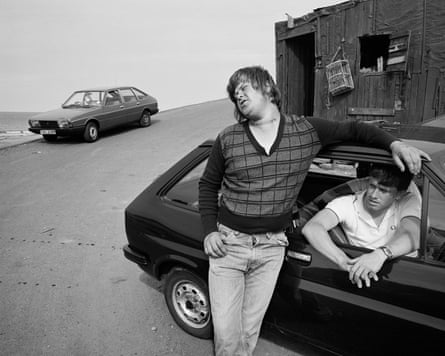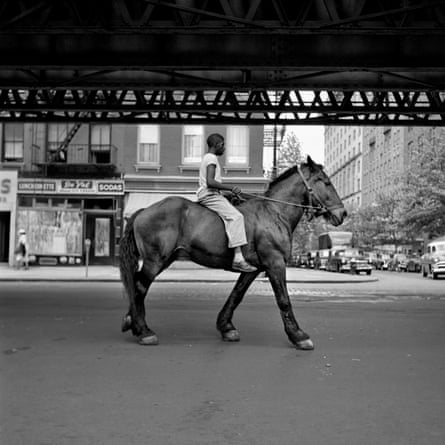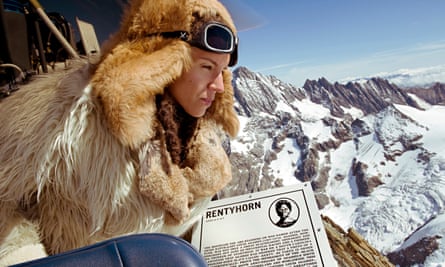[ad_1]
1. Roy DeCarava: Selected Works
David Zwirner, London
The first UK exhibition of Roy DeCarava’s photography in more than 30 years was a sustained study in the quietly mesmeric power of light and shadow. Whether through formal portraits or mysterious landscapes and interiors, DeCarava imbued the everyday experience of Black urban life in America with a hushed reverence and formal rigour that brought to life a world that was all but invisible to the mainstream. This retrospective was a revelatory glimpse of a singular way of seeing that spanned six decades and constantly evaded the obvious. As his widow, Sherry Turner DeCarava, who curated the exhibition, put it: “He was defined by aesthetics, not just geography or sociology.”
2. Chris Killip, retrospective
Photographers’ Gallery, London, until 19 February

One the most influential British documentary photographers of the last 50 years, Chris Killip, who died in 2020, finally received the retrospective he deserved with this comprehensive exhibition. Killip’s abiding subject was the deindustrialisation of England’s north-east in the 1970s and 80s, which he captured by immersing himself deeply in the communities that had most to lose in the process. The results, whether shipyards or skinheads, miners or fishers, are spare and unsentimental, but filled with humanity and undercut with what he described as “a sense of urgency” for an England that was rapidly disappearing before his eyes.
3. Vivian Maier: Anthology
MK Gallery, Milton Keynes

Another revelatory retrospective that deftly highlighted the often audacious artistry of a visionary photographer who died in 2009, aged 83, two years after the discovery of her vast archive. Since then, the romantic myth of Vivian Maier, the secretive nanny with the camera, has tended to overshadow the actual work, which ranges from street scenes to clandestinely shot portraits, sculptural closeups of torsos and fabrics to knowingly conceptual self-portraits. Here, the arc of her constantly creative life was traced in just 140 photographs that spoke volumes about her self-assurance and seeming indifference to fame and recognition.
4. Chris Killip and Graham Smith: 20/20
Augusta Edwards Gallery, London

As a revealing counterpoint to the Photographers’ Gallery retrospective of Chris Killip’s work, Augusta Edwards homed in on the friendship and creative dynamic between Killip and the more elusive Graham Smith. The latter is a legendary figure in British photography not least because of his long refusal, until now, to engage with the gallery system. The show nodded to a groundbreaking exhibition of their work, Another Country, at the Serpentine Gallery in 1985, the title of which has become even more apposite in the interim. Likewise, the strange poetry of Smith’s candid portraits of working-class drinkers in the pubs of his native Middlesbrough, which are intimate glimpses of alcohol-fuelled reveries and encounters.
5. Sasha Huber: You Name It
Autograph, London, until 25 March 2023

Reprising over a decade of the Swiss-Haitian artist’s work exploring the legacy of colonialism in her native Switzerland and beyond, You Name It is a multimedia exhibition that repays close attention to its complex contemporary and historical resonances. It centres on the divisive, 19th-century figure of Louis Agassiz, a renowned archeologist and glaciologist, who was also an extreme proponent of scientific racism who actively championed the segregation and subjugation of Black people on the grounds that God had created them as inferior beings. Using films that record her actions to rename a mountain named after him in the Swiss Alps, alongside historical material and reimagined portraits of some of his subjects – made by “dressing” them in meticulously applied fabric – Huber explores the roots of colonial racism and its contemporary echoes. Timely and complex work.
[ad_2]